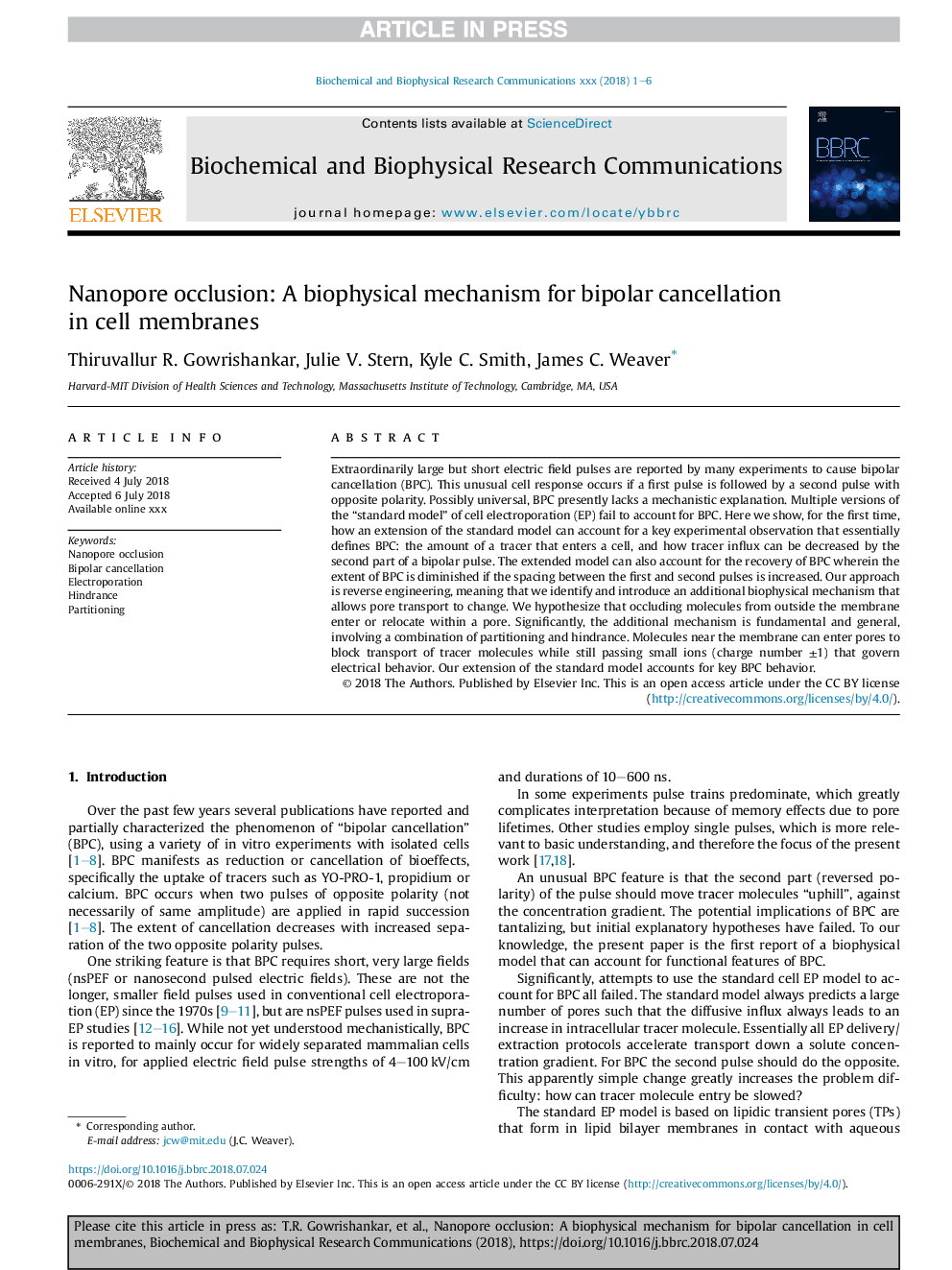| Article ID | Journal | Published Year | Pages | File Type |
|---|---|---|---|---|
| 8955939 | Biochemical and Biophysical Research Communications | 2018 | 6 Pages |
Abstract
Extraordinarily large but short electric field pulses are reported by many experiments to cause bipolar cancellation (BPC). This unusual cell response occurs if a first pulse is followed by a second pulse with opposite polarity. Possibly universal, BPC presently lacks a mechanistic explanation. Multiple versions of the “standard model” of cell electroporation (EP) fail to account for BPC. Here we show, for the first time, how an extension of the standard model can account for a key experimental observation that essentially defines BPC: the amount of a tracer that enters a cell, and how tracer influx can be decreased by the second part of a bipolar pulse. The extended model can also account for the recovery of BPC wherein the extent of BPC is diminished if the spacing between the first and second pulses is increased. Our approach is reverse engineering, meaning that we identify and introduce an additional biophysical mechanism that allows pore transport to change. We hypothesize that occluding molecules from outside the membrane enter or relocate within a pore. Significantly, the additional mechanism is fundamental and general, involving a combination of partitioning and hindrance. Molecules near the membrane can enter pores to block transport of tracer molecules while still passing small ions (charge number ±1) that govern electrical behavior. Our extension of the standard model accounts for key BPC behavior.
Keywords
Related Topics
Life Sciences
Biochemistry, Genetics and Molecular Biology
Biochemistry
Authors
Thiruvallur R. Gowrishankar, Julie V. Stern, Kyle C. Smith, James C. Weaver,
